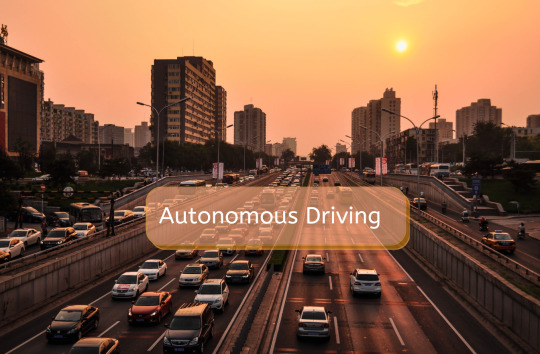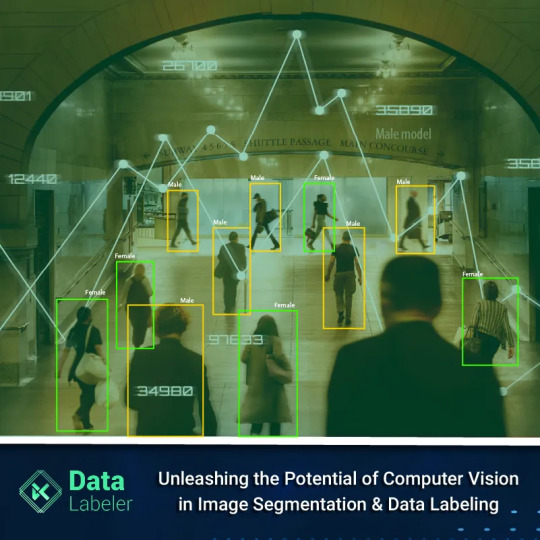#SemanticSegmentation
Explore tagged Tumblr posts
Text

Mapping Every Corner | Interiors, Intelligently Annotated
We don’t just label data - we decode the visual language of interior spaces. From sofas to ceilings, from lighting fixtures to flooring patterns, our House Interior Annotation service brings structured intelligence to raw images.
Whether you are building AI for home design, AR furniture apps, interior object detection, or robotic home assistants - your model is only as smart as the data it learns from.
We specialize in pixel-perfect annotations for:
Furniture detection & segmentation
Wall, floor, ceiling boundaries
Decor items & lighting elements
Room layout & object spatial relations
Semantic and instance segmentation
Let machines learn the art of interiors - with Wisepl’s precise annotation expertise.
Let’s talk: [email protected] | wisepl.com Connect with us for pilot projects, collaborations, or enterprise-scale annotation.
#HouseInteriorAnnotation#InteriorAI#SmartHomes#AIAnnotation#DataLabeling#ComputerVision#InteriorDesignTech#Wisepl#DeepLearningData#SpatialIntelligence#SemanticSegmentation#VisionForInnovation#AnnotationExperts
0 notes
Text
What Is Image Annotation? What Are Its Types?
Image annotation is a fundamental process in computer vision that involves adding metadata to images to facilitate algorithmic interpretation. By employing various types of annotation techniques such as bounding box annotation, semantic segmentation, and landmark annotation, companies like EnFuse Solutions play a crucial role in advancing the capabilities of machine learning models across diverse industries.
#ImageAnnotation#TypesOfImageAnnotation#BoundingBoxAnnotation#PolygonAnnotation#SemanticSegmentation#InstanceSegmentation#LandmarkAnnotation#AnnotationCompaniesInIndia#EnFuseSolutions
0 notes
Text
How to Annotate Images for Deep Learning-Powered Semantic Segmentation

Semantic image segmentation involves assigning a semantic label to each pixel. Deep learning image annotation has emerged as the dominant approach for semantic segmentation, leveraging convolutional neural networks (CNNs) to learn hierarchical features and generate precise segmentation masks.
0 notes
Text
Data Annotation Types to execute Autonomous Driving

Autonomous vehicles are still working towards reaching the stage of full autonomy. A fully functioning and safe autonomous vehicle must be competent in a wide range of machine learning processes before it can be trusted to drive on its own. From processing visual data in real-time to safely coordinating with other vehicles, the need for AI is essential. Self-driving cars could not do any of this without a huge volume of different types of training data, created and tagged for specific purposes.
Due to the several existing sensors and cameras, advanced automobiles generate a tremendous amount of data. We cannot use these datasets effectively unless they are correctly labeled for subsequent processing. This could range from simple 2D bounding boxes all the way to more complex annotation methods, such as semantic segmentation.
There are various image annotation types such as Polygons, bounding boxes, 3D cuboids, Semantic Segmentation, Lines, and Splines that can be incorporated into autonomous vehicles. These annotation methods help in achieving greater accuracy for autonomous driving algorithms. However, which annotation method is best suited for you must be chosen according to the requirements of your project.
Types of Annotation for Autonomous Driving
Below we have discussed all types of annotation required to make the vehicle autonomous.
2D bounding Box Annotation
The bounding box annotation technique is used to map objects in a given image/video to build datasets thereby enabling ML models to identify & localize objects.2D boxing is rectangular, and among all the annotation tools, it is the simplest data annotation type with the lowest cost. This annotation type is preferred in less complex cases and also if you are restricted by your budget. This is not trusted to be the most accurate type of annotation but saves a lot of labeling time. Common labeling objects include: Vehicles, Pedestrian, Obstacles, Road signs, Signal lights, Buildings and Parking zone.
3D Cuboid Annotation
Similar to the bounding boxes that were previously discussed, this type involves the annotator drawing boxes around the objects in an image. The bounding boxes in this sort of annotation, as the name implies, are 3D, allowing the objects to be annotated on depth, width, and length (X, Y, and Z axes). An anchor point is placed at each edge of the object after the annotator forms a box around it. Based on the characteristics of the object and the angle of the image, the annotator makes an accurate prediction as to where the edge maybe if it is missing or blocked by another object. This estimation/ annotation plays a vital role in judging the distance of the object from the car based on the depth and detecting the object’s volume and position.
Polygon Annotation
It can occasionally be challenging to add bounding boxes around specific items in an image due to their forms and sizes. In photos and movies with erratic objects, polygons provide precise object detection and localization. Due to its precision, it is one of the most popular annotation techniques. However, the accuracy comes at a price because it takes longer than other approaches. Beyond a 2D or 3D bounding box, irregular shapes like people, animals, and bicycles need to be annotated. Since polygonal annotation allows the annotator to specify additional details such as the sides of a road, a sidewalk, and obstructions, among other things, it can be a valuable tool for algorithms employed in autonomous vehicles.
Semantic Segmentation
We’ve looked at defining objects in images up to this point, but semantic segmentation is far more accurate than other methods. It deals with assigning a class to each pixel in an image. For a self-driving automobile to function well in a real-world setting, it must comprehend its surroundings. The method divides the items into groups like bicycles, people, autos, walkways, traffic signals, etc. Typically, the annotator will have a list made up of these. In conclusion, semantic segmentation locates, detects, and classifies the item for computer vision. This form of annotation demands a high degree of accuracy, where the annotation must be pixel-perfect.
Lines and Splines Annotation
In addition to object recognition, models need to be trained on boundaries and lanes. To assist in training the model, annotators drew lines in the image along the lanes and edges. These lines allow the car to identify or recognize lanes, which is essential for autonomous driving to succeed since it enables the car to move through traffic with ease while still maintaining lane discipline and preventing accidents.
Video Annotation
The purpose of video annotation is to identify and track objects over a collection of frames. The majority of them are utilized to train predictive algorithms for automated driving. Videos are divided into thousands of individual images, with annotations placed on the target object in each frame. In complicated situations, single frame annotation is always employed since it can ensure quality. At this time, machine learning-based object tracking algorithms have already helped in video annotation. The initial frame’s objects are annotated by the annotator, and the following frames’ items are tracked by the algorithm. Only when the algorithm doesn’t work properly does the annotator need to change the annotation. As labor costs decrease, clients can save a greater amount of money. In basic circumstances, streamed frame annotation is always employed.
Use Cases of Autonomous Driving
The main goal of data annotation in automotive is to classify and segment objects in an image or video. They help achieve precision, which to automotive is important, given that it is a mission-critical industry, and the accuracy, in turn, determines user experience. This process is essential because of the use cases it enables:
Object and vehicle detection: This crucial function allows an autonomous vehicle to identify obstacles and other vehicles and navigate around them. Various types of annotation are required to train the object detection model of autonomous driving so that it can detect persons, vehicles, and other obstacles coming in its way.
Environmental perception: Annotators use semantic segmentation techniques to create training data that labels every pixel in a video frame. This vital context allows the vehicle to understand its surroundings in more detail. It’s important to have a complete understanding of its location and everything surrounding it to make a safe drive.
Lane detection: Autonomous vehicles need to be able to recognize road lanes so that they can stay inside of them. This is very important to avoid any accidents. Annotators support this capability by locating road markings in video frames.
Understanding signage: The vehicle must be able to recognize all the signs and signals on the road to predict when and where to stop, take a turn, and many related objectives. Autonomous vehicles should automatically detect road signs and respond to them accordingly. Annotation services can enable this use case with careful video labeling.
Conclusion
Although it takes a lot of effort, delivering Ground Truth quality annotation for self-driving cars is crucial to the project’s overall success. Get the best solutions by using precise annotations created by TagX to train and validate your algorithms.
We are the data annotation experts for autonomous driving. We can help with any use case for your automated driving function, whether you’re validating or training your autonomous driving stack. Get in contact with our specialists to learn more about our automobile and data annotation services as well as our AI/ML knowledge.
#ObjectDetection#LaneMarkingAnnotation#SemanticSegmentation#3DAnnotation#artificial intelligence#machinelearning#dataannotation
0 notes
Text
Pixel level Annotation
Semantic Segmentation - A pixel level annotation for #SelfDrivingCars #drones #Robotics https://annotationsupport.com/semantic-segmentation.php?utm_source=tumblr&utm_medium=organic…
0 notes
Photo

Computer vision is an interdisciplinary scientific field which deals with how computers can be made to gain high-level understanding from digital images or videos. As a scientific discipline, computer vision is concerned with the theory behind artificial systems that extract information from images. Check our Info : www.incegna.com Reg Link for Programs : http://www.incegna.com/contact-us Follow us on Facebook : www.facebook.com/INCEGNA/? Follow us on Instagram : https://www.instagram.com/_incegna/ For Queries : [email protected] #machinelearning,#computervision,#supervised,#Facerecognition,#Imageretrieval,#Gaming,#Surveillance,#Biometrics,#imageclassification,#objectdetection,#objecttracking,#Semanticsegmentation,#Instancesegmentation https://www.instagram.com/p/B9Vz6c-AdSt/?igshid=gir0fm6hj6oc
#machinelearning#computervision#supervised#facerecognition#imageretrieval#gaming#surveillance#biometrics#imageclassification#objectdetection#objecttracking#semanticsegmentation#instancesegmentation
0 notes
Text
How Computer Vision is aiding the Image Segmentation & Data Labeling Industry?
The size of the global market for computer vision was estimated at USD 11.22 billion in2021, and it is anticipated to increase at a 7.0% CAGR from 2022 to 2030. Computer vision systems utilizing artificial intelligence (AI) are becoming more and more common in a range of applications, such as consumer drones and fully or partially autonomous vehicles.

The Role of Computer Vision in Image Segmentation
Recent developments in computer vision, including image sensors, sophisticated cameras, and deep learning methods, have increased the potential applications for computer vision systems across a range of sectors. Sectors include education, healthcare, robotics, consumerelectronics, retail, manufacturing, and security & surveillance, among others.
The partition of a digital image into several segments (objects) is known as image segmentation. Segmentation aims to transform an image’s representation into one that is more meaningful and understandable.
Various Image Segmentation Types
Based on the quantity and type of information they communicate, image segmentation tasks can be divided into three groups: semantic, instance, and panoptic segmentation. Semantic segmentation (not instance-based)
The process of semantic segmentation, often referred to as non-instance segmentation, aids in describing the location of the items as well as their form, size, and shape.
It is primarily applied when a model needs to know for sure whether or not an image contains an object of interest and which portions of the image do not. Without taking into account any further information or context, pixels are simply labeled as belonging to acertain class.
Segmentation by Instance
The practice of segmenting objects by their presence, position, quantity, size, and shape is known as instance segmentation. With each pixel, the objective is to better comprehend the image. To distinguish between objects that overlap or are similar, the pixels are categorized based on “instances” rather than classes.
Pan-optic segmentation
Since it combines semantic and instance segmentation and offers detailed data for sophisticated ML algorithms, panoptic segmentation is by far the most informative task.
Popular Image Segmentations with Computer Vision in Various Sectors Due to the complicated robotics tasks that self-driving cars must undertake and the need for a thorough grasp of their environment, it is particularly well-liked in the field of autonomous driving. Geosensing for mapping land use with satellite imaging, trafficcontrol, city planning, and road monitoring are further geospatial uses for semanticsegmentation.
Precision farming robotic initiatives are aided in real-time to start weeding by semantic segmentation of crops and weeds. With the use of these sophisticated computer vision systems, manual agricultural activity monitoring has been greatly reduced.
Semantic segmentation makes it possible for fashion eCommerce firms to automate operations like the parsing of garments that are traditionally quite difficult.
The recognition of facial features is another popular topic of study. By analyzing facial traits, the algorithms can infer gender, age, ethnicity, emotion, and more. These segmentation tasks get more difficult due to elements like various lighting conditions,facial expressions, orientation, occlusion, and image resolution.
In the context of cancer research, computer vision technologies are also gaining ground in the healthcare sector. When examples are used to identify the morphologies of the malignant cells to speed up diagnosis procedures, segmentation is frequently utilized.
Are you prepping to begin your Image Segmentation Use case?
Reach out to our professionals in Data Labeler, so they can assist you in quickly and efficiently producing data that is appropriately labeled.
Data Labeler increases your competitive advantage, provides you with Unlimited support, and helps you grow exponentially.
Contact us now!
0 notes
Text

Semantic Segmentation For Autonomous Driving Vehicle Data
Elevate your autonomous vehicle data with precision and accuracy through our expert data annotation services. Specializing in semantic segmentation, we ensure your data is meticulously labeled to enhance machine learning models and improve safety, efficiency, and performance on the road.
🔹 High-Quality Annotations: Our team delivers precise and reliable segmentations, identifying and categorizing every object in the driving environment. 🔹 Scalable Solutions: From small datasets to large-scale projects, our services are tailored to meet your specific needs. 🔹 Accelerate Development: Speed up your AI development cycle with our fast and efficient annotation process. 🔹 Boost Performance: Enhance the capabilities of your autonomous systems with accurate and detailed data.
Drive into the future with confidence. Partner with us for top-notch semantic segmentation services for your autonomous vehicle data today!
📞 Contact us now to learn more and get started! [email protected]
#semanticsegmentation#autonomousvehicles#selfdrivingdatasets#imageannotation#dataannotation#datalabeling#trainingdatasets#annotationservices#computervision#machinelearning#wisepl#AI
0 notes
Photo

ML models for Self-driving cars need to understand the context in the environment in which they’re operating. #SemanticSegmentation doing what it does best
0 notes
Photo

DeepLabをリアルタイムで動かすことができたので、TouchDesigner連携して強制的に音楽にノリノリにさせてみました。 #touchdesigner #deeplab #semanticsegmentation https://t.co/uM72AhKSCk http://twitter.com/foka22ok/status/1265213326998384642
0 notes
Text
Key point Annotation Services
#KeypointAnnotation - Detailed protocol of #Imageannotation used to detect small objects and shape variations by marking locations of key points. Get details about our service at:https://annotationsupport.com/keypoint-annotation.php?utm_source=tumblr&utm_medium=organic…
0 notes
Photo

Computer vision is an interdisciplinary scientific field which deals with how computers can be made to gain high-level understanding from digital images or videos. As a scientific discipline, computer vision is concerned with the theory behind artificial systems that extract information from images. #machinelearning,#computer,#vision,#digital,#images,#artificial,#images.#controlrobotics,#signalprocessing,#imaging,#biometrics,#neurobiology,#Facerecognition #biometrics,#gametheory,#surveillance,#smartcars,#objectdetection,#objecttracking,#semanticsegmentation,#instance,#AI,#ML,#deeplearning,#datascience,#python Check our Info : www.incegna.com Reg Link for Programs : http://www.incegna.com/contact-us Follow us on Facebook : www.facebook.com/INCEGNA/? Follow us on Instagram : https://www.instagram.com/_incegna/ For Queries : [email protected] https://www.instagram.com/p/B5HlLByg3SX/?igshid=1c08py1i7h3l2
#machinelearning#computer#vision#digital#images#artificial#controlrobotics#signalprocessing#imaging#biometrics#neurobiology#facerecognition#gametheory#surveillance#smartcars#objectdetection#objecttracking#semanticsegmentation#instance#ai#ml#deeplearning#datascience#python
0 notes
Photo

DeepLabをリアルタイムで動かすことができたので、TouchDesigner連携して強制的に音楽にノリノリにさせてみました。 #touchdesigner #deeplab #semanticsegmentation https://t.co/uM72AhKSCk foka22ok さんのツイートから
0 notes
Photo

via @foka22ok
DeepLabをリアルタイムで動かすことができたので、TouchDesigner連携して強制的に音楽にノリノリにさせてみました。#touchdesigner #deeplab #semanticsegmentation pic.twitter.com/uM72AhKSCk
— foka (@foka22ok) May 26, 2020
0 notes
Photo

Webinar Deep Learning in Machine Vision http://ehelpdesk.tk/wp-content/uploads/2020/02/logo-header.png [ad_1] This webinar gives users of mach... #androiddevelopment #angular #bildverarbeitung #c #classification #cnn #convolutionalneuralnetworks #css #dataanalysis #datascience #deeplearning #deeplearningnetwork #defectdetection #development #docker #halcon #industrialimaging #industriellebildverarbeitung #iosdevelopment #java #javascript #klassifikation #machinelearning #machinevision #maschinellessehen #mvtecsoftware #mvtecsoftwaregmbh #node.js #objectdetection #pretrainednetworks #python #react #semanticsegmentation #unity #visionsoftware #webdevelopment
0 notes